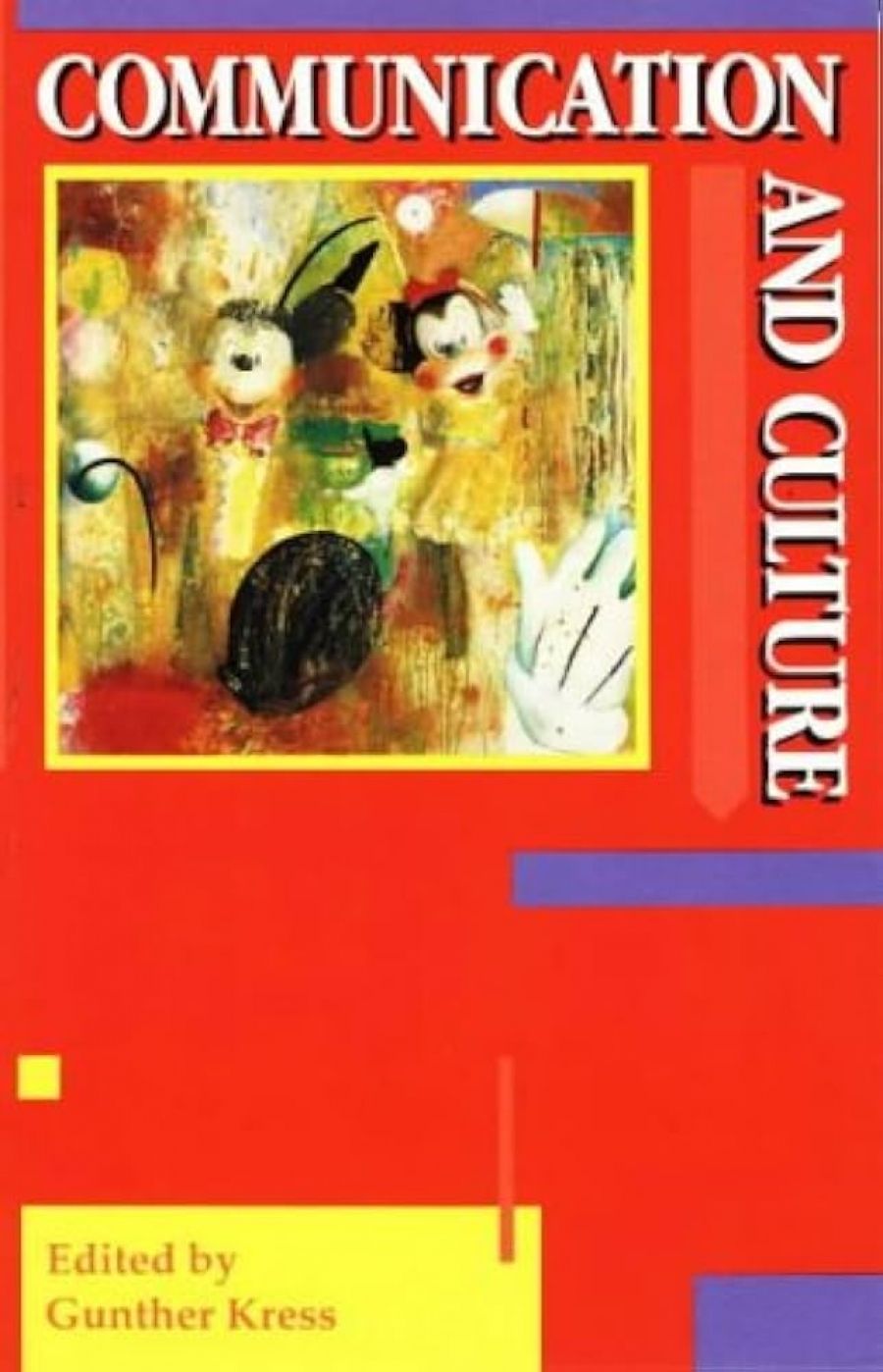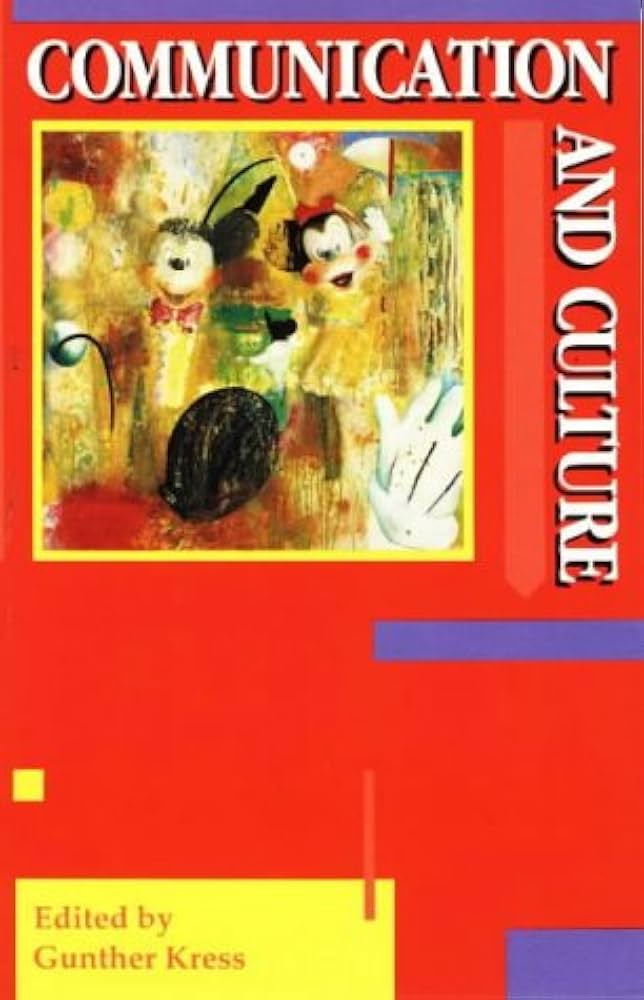
- Free Article: No
- Contents Category: Cultural Studies
- Review Article: Yes
- Article Title: Teaching culture
- Online Only: No
- Custom Highlight Text:
I recently attended a seminar where the speaker’s main purpose seemed to be to denigrate the reputation of a well-known contemporary sociologist by suggesting that his virtues were those of synthesis and compilation rather than ones of originality. As if to clinch the point, the speaker let it be known that it was rumoured the sociologist in question was currently engaged inwriting a text-book – and, as if to make matters worse, for a major American publisher.
- Book 1 Title: Communication and Culture: An Introduction
- Book 1 Biblio: New South Wales University Press, $14.95 pb, 190 pp
- Book 1 Cover Small (400 x 600):

- Book 1 Cover (800 x 1200):

I felt much the same when, in the midst of reading Communication and Culture, I took time out to glance through a recent issue of New Formations, a cultural studies journal published from London. While I support this journal and am, indeed, associated with it, I was disturbed to see, in the editorial, a statement to the effect that the journal’s aim was not to consolidate cultural studies as an academic discipline but rather to keep theory moving. The latter aspiration is, of course, perfectly proper. It was the insinuation that establishing cultural studies as an academic discipline was in some way a demeaning activity that rankled.
For there are few disciplines where such work can be more important than cultural studies given its present phase of development. Having previously been regarded as a sub-component of other disciplines, such as sociology and literary studies, it has now established a separate, albeit precarious, identity of its own. The need to simplify its methods and procedures in order to make them more easily communicable to student readers is therefore critical if it is to consolidate its position in the curricula of the humanities and social sciences.
Communication and Culture shows as lively an appreciation of this need as one could ask. There is no sign that Gunther Kress and his co-writers hold the work of text-book writing in anything but the highest regard. If they haven’t fudged the job – and they haven’t – this is largely because they have respected the conditions which text-book writing imposes. Avoiding the temptation to indulge their pet hobby-horses or to impress their peers with their ‘originality’, the authors succeed remarkably well in keeping the needs of students clearly before them.
There are two overview chapters – one, by Gunther Kress, on the various meanings of the terms ‘communication’ and ‘culture’, and the second by Ann Curthoys, which reviews recent sociological perspectives on the structure of Australian society, past and present. These work well in stressing the need to view forms of culture and communication in their social and historical contexts while also indicating something of the complexity involved in taking account of both gender and class considerations in such analyses.
The remaining chapters then focus in more detail on particular forms of contemporary culture. In doing so, they introduce a wealth of varying theoretical perspectives. Helen Wilson, for example, examines the industrialisation of cultural production, relating general arguments on the political economy of the media to the structure of contemporary media ownership in Australia in an invigorating and topical fashion. Similarly, in his chapter on Language as Social Practice, Gunther Kress offers a richly illustrated discussion of both written and spoken forms of language use which effectively argues the need for analysis to pay attention to the social occasions which regulate all forms of communicative transaction.
The concluding chapters deal with visual images and with film and television respectively. Noel Saunders’s Angels on the Image suggests how visual images can be read as texts and, in doing so, nicely transgresses the boundaries between high and popular culture in the telling parallels he observes between Velazquez’s Las Meninas and the New South Wales anti-drink driving advertisements.
However, Anne Cranny-Francis’ concluding chapter perhaps best encapsulates the book’s enterprise. In the space of twenty live or so pages, she usefully outlines the relations between genre and narrative in popular film and television. Yet, while constantly keeping her discussion within the reach of the novitiate, she doesn’t duck some of the more difficult issues – those of multi-generic texts, for example – which such matters raise. Her examples are also well-known – she focuses primarily on the Mad Max movies – in falling within the likely range of experience of Australian students. The same is true of the book as a whole which, while retaining a comparative perspective, draws on Australian materials for most of its examples.
What I most like about the collection, however, is its consistently patient and painstaking teacherly orientation. It is very clearly and concisely written throughout. All of the contributors have developed (or have been edited into) a simple sentence structure which helps enormously in breaking down complex arguments into more easily assimilable components. The editor has also provided a brief summary for each chapter which helps to signpost its main concerns.
Do I have any quibbles with the book? Of course: there are problems with the way the terms ‘communication’ and ‘culture’ are glossed since these end up being treated virtually as synonyms. However, these are minor reservations and not worth rehearsing at any length. Communication and Culture should prove a very usable book in view of its capacity to make the concerns of cultural studies accessible. It would serve well as a set book for introductory courses in the first year of tertiary studies and, with adventuresome teachers, could even be used to introduce the subject into the final years of secondary schooling. And the good news is that it s the first in a series which, if the following volumes are anything like as well conceived, should do a great deal to consolidate cultural studies as a routinely teachable discipline.


Comments powered by CComment